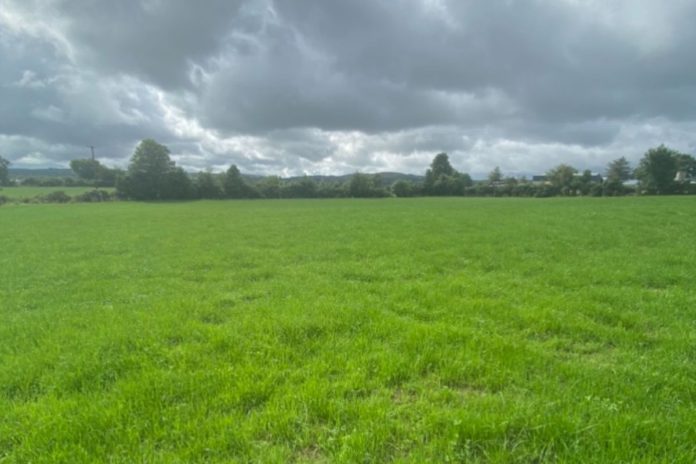In this article, we will discuss multi-species swards, what they are, how to manage a multi-species sward correctly and the establishment. We will also look at the benefits and negatives of introducing a multi-species sward onto your farm.
Multi-species swards have become a growing interest on Irish farms in recent years.
Multi-species swards can yield a high quantity of dry matter without the added expense of chemical Nitrogen.
Eco-friendly farming measures have sparked interest on farms across the nation. Each farmer must consider what is involved in a successful multi-species sward.
In 2020, the Department of Agriculture, Food and Marine (DAFM) composed the Ag Climatise document.
One of the key targets of this plan is the reduction of chemical Nitrogen on agricultural land across Ireland.
The aim is to “reduce chemical nitrogen use on Irish farms to a target level of 350,000t by 2025, with a further reduction to an absolute maximum of 325,000t by 2030, equivalent to the usage in 2013”.
Furthermore, Minister Charlie McConalogue has amended the eco-scheme proposals under Ireland’s 2023-2027 CAP Strategic Plan.
In this plan, Mc Conalogue has also confirmed a limitation on chemical Nitrogen usage. This is a potential opportunity for farmers to incorporate multi-species swards as a measure of chemical Nitrogen reduction.
What is a Multi-species sward?
The definition of a multi-species sward is a grass mixture composed of two or more species.
Furthermore, this includes grass species such as herbs and legumes used in grazing mixtures.
The variety of plants included in multi-species grassland include grasses, clovers, brassicas and herbs.
Management of Multi-species swards:
Managing a new reseed, including a multi-species mixture, is similar to grass swards. However, there are a few additional points to consider when specifically grazing a multi-species sward.
It is crucial to establish the sward that no post-emergence herbicide is applied.
Teagasc conducted research that has stated that multi-species mixtures have the natural ability to resist pressure from weeds.
During the summer months, you should have chemical fertiliser application reduced. The Nitrogen available through clover incorporated throughout the mix should provide sufficient energy for grass growth.
Moreover, grazing rotations have some flexibility in terms of pre and post grazing covers. You can extend the grazing rotation to 25 days.
By allowing animals access to grazing a multi-species sward for a shorter period, the sward has the potential to be saved for a longer persistency.
Shorter access periods (1-3 days) to the sward reduce selective over-grazing of more palatable herbs, which would otherwise be grazed out.
Benefits of multi-species swards:
Sowing a grassland mixture with several different species can have many benefits for the overall sward.
As well as improving farm biodiversity, there are environmental benefits. These benefits are based on the nitrogen-fixing ability of some species. Subsequently, this natural process allows for a reduction of chemical fertiliser inputs.
The nitrogen-fixing ability of a multi-species sward also maintains a steady growth rate at a reduced fertiliser application.
Research conducted by Teagasc stated that a multi-species sward containing 20-50% clover can reduce fertiliser application by more than 50% in summer.
This is a particularly important aspect to consider as we approach 2022, with soaring fertiliser prices.
Teagasc, Johnston Castle and University College Dublin (UCD) conducted a study involving a mixture including timothy, perennial ryegrass, red clover, ribwort plantain and chicory.
The trialled mixture grew 11.6t of dry matter. Teagasc and UCD achieved this yield with no addition of chemical fertiliser.
The yield further increased to 13.1t by adding 240kg of chemical Nitrogen.
Negatives of multi-species swards:
Generally, the persistency of herbs tends to be poor. A lifespan of 3-5 years is to be expected with these swards.
However, you should note that persistency is also influenced by management, fertility and the type of soil in which the multi-species mixture is established.
There are some restrictions surrounding weed control of these low-input swards at the farm level.
Spraying for weeds, that may appear in a reseed, can have a detrimental influence on herbs established within the sward.
Establishment of a successful multi-species sward:
Ideally, you should establish a multi-species sward through a full reseed. The optimal time of year for this operation to take place is from April to early August.
To ensure the successful establishment, different multi-species mixtures can be composed to suit a variety of soil types.
When considering the soil type, a mixture of species with the ability to establish on a mixture of soil types, is ideal.
As with the reseed of any grassland mixture, soil fertility is optimal. You should conduct shallow sowing for small seeds of clover, plantain and chicory.
Furthermore, you should establish a firm seedbed by rolling for good seed-soil contact. This is a crucial element of successfully establishing a multi-species sward.





